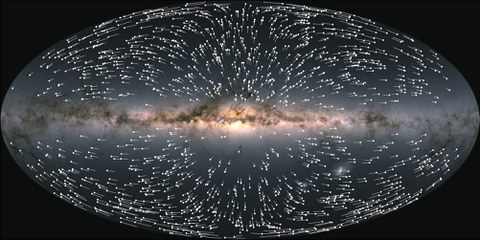Oct 25, 2021
The astrometric space telescope Gaia at TU Dresden
For more than 20 years, a group of scientists from the Lohrmann Observatory at TU Dresden has been involved in one of the most fascinating astronomical projects of our time – the space telescope Gaia. The ESA mission Gaia was launched in December 2013 and measures the positions of approximately 2 billion celestial objects (mainly stars) so accurately that the tiny variations in their positions reveal information about the distance of these objects as well as their spatial motions. The obtained data, which are gradually being published by the Gaia consortium, are an astronomical revolution: about five papers based on the data are published every day – an enormous number for such a “small” science like astronomy.
Applications of the Gaia results can be found throughout astronomy: ranging from the more precise determination of asteroids orbits in the solar system, to new insights into physics of stars and the dynamics of our Galaxy, to the physics of quasars – distant galaxies that define the reference frame for Gaia. An interesting example is illustrated by the picture where the apparent motions of the quasars at the sky are shown. These are not random, but follow a particular pattern that tells us the acceleration of our solar system w.r.t. the rest frame of the universe – a spectacular measurement and the first of its kind.
The data processing for Gaia is being carried out by a consortium of European scientists in which the Gaia group of the TU Dresden is playing a key role. Its responsibilities encompass the relativistic modelling of the Gaia observations, tests of relativity, high-precision time-synchronization of the spacecraft’s atomic clock, definition of the catalogue of distant galaxies (especially quasars) and, last but not least, evaluation, verification, and improvement of the main product of the project – the astrometric catalogue of positions, motions, and distances of approximately 2 billion celestial objects detected by Gaia. The creation of the astrometric catalogue requires massive computations. These are conducted using the high-performance cluster of the TU Dresden in close collaboration with the ZIH.
The DLR has been funding the Gaia group at TU Dresden since 2006. A total of about 4.3 million Euro have been approved for the project so far. The last approval provides for about 1.4 million Euro until the end of 2025. The operation of the satellite itself has been extended several times because of its great success. Gaia will continue to work in space and send data to Earth until Spring 2025. It is expected that the extensive data processing will continue until 2030.

